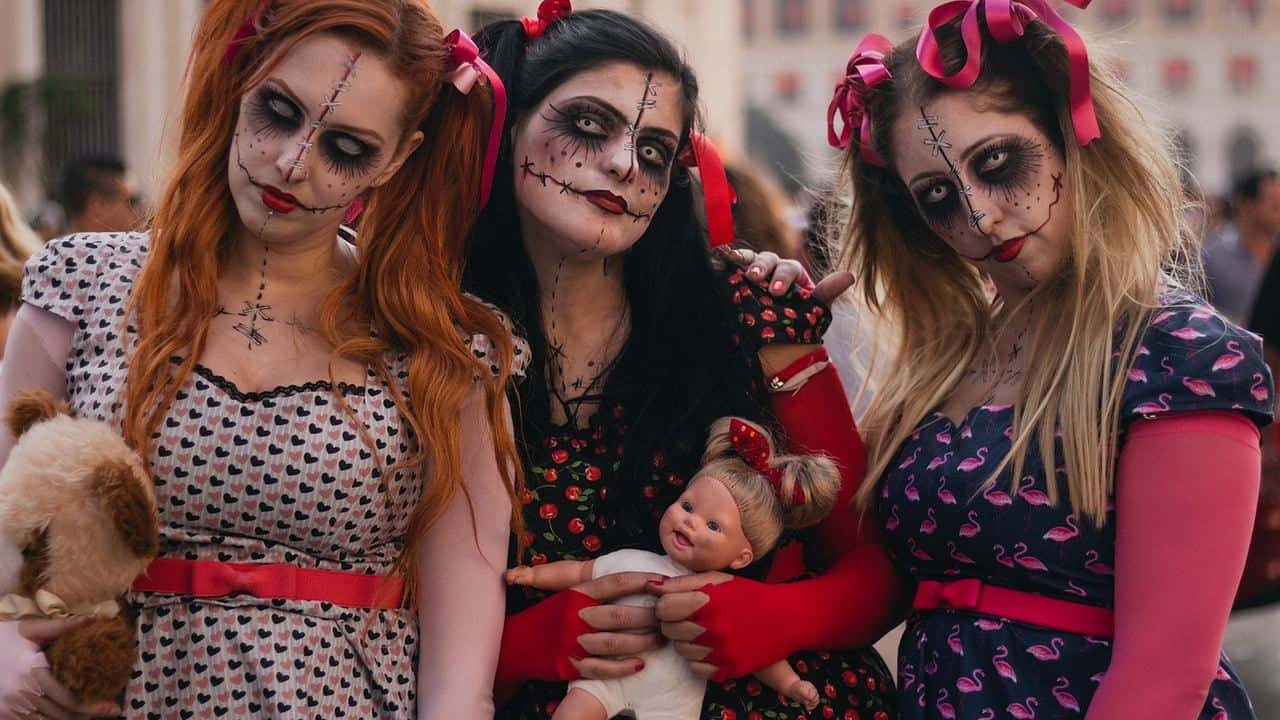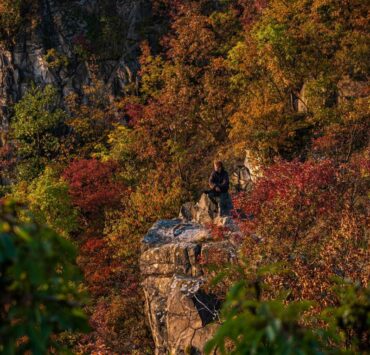“Trick or treat? Trick or treat?” Although this is a commonly heard phrase in many parts of the world towards the end of October and the approach of Halloween, it is a much more recent addition to the vocabulary of those living in Budapest.
Here, it is rapidly gaining acceptance and popularity, especially with younger generations who have children desperately eager to dye their hair, don lots of make-up, cover themselves in cobwebs and embrace all that Halloween has to offer.
The background of Halloween
Halloween today, is a blend of Celtic, Roman and Catholic traditions, both pagan and Christian, marking the end of the growing season and preparing for the start of winter.
Two thousand years ago, the Celts would all extinguish their home hearth fires on the eve of October 31st, the eve of Samhain, and gather around a large bonfire in the village, singing, dancing and telling stories. At the end of the evening, each household would take part of the bonfire back to their homes to relight their hearths in the hope of sharing good fortune for the coming year.
If the hearth relit, the year ahead would be blessed with good fortune and good health for the household. If the hearth fire did not relight, however, this was taken as a sign that misfortune or maybe even death, would strike someone in the household that year.
A bejegyzés megtekintése az Instagramon
Why is it called Halloween?
The name Halloween comes from an old English expression for the feast of All Saints’ Day, which was Allhallowsmas, where ‘hallow’ means ‘holy person’ or ‘Saint’.
The expression was shortened to Allhallows or Hallowmas and over time became the name for the day after the feast as well. The whole period from October 31st to November 2nd was also known as Allhallowtide. Over time these names have corrupted and become today’s expression of Halloween.
Pumpkins and trick or treating
The Irish who emigrated in large numbers to the United States after the potato famine of 1847, also took with them their Halloween traditions. These included carving scary faces into turnips and potatoes, which they then started to carve into the more abundant pumpkins found there.
The Irish also took to the States the tradition of children going from house to house, knocking on doors, and asking for sweet things. The tradition of trick and treating. So, these traditions came from the Celts in Europe to the United States, where initially they were banned as pagan rituals in some states, but widely accepted in others, and spread around the world from there.
A bejegyzés megtekintése az Instagramon
Ghosts and ghouls
The eve of Samhain was also a night where the veil between the living and the dead was supposed to be at its thinnest. This meant that the Druids were able to communicate with the dead most easily on this night, and it was more likely for ghosts and ghouls to come and mix with the living. The tradition of wearing scary, ghostly costumes was initially to confuse the ghouls about your identity, and disguise whether you were living or dead.
Around the corridors of a school in Budapest I recently visited, the parents had been in, filling the classrooms with hairy spiders, cobwebs and floating ghosts, there were gruesome carved pumpkin faces outside every classroom, and children dressed up as scary witches, Draculas and Zombies. This tradition of scary costume-wearing is continued by children around the world today, as they go around trick or treating, even if they may not be fully aware of its’ origins.
A bejegyzés megtekintése az Instagramon
Budapest Catholic traditions
Being as Hungary is a predominantly Catholic country, Hungarians have been much more in line with following the traditions of All Saints’ Day on November 1st and then All Souls Day on November 2nd. On the former, they remember all the Christian Saints of the church who have left us on Earth and made it to heaven, and on the latter, they pray for the souls of all others who have passed away, in case they are still in purgatory and need prayers to help them get to heaven.
These two days are celebrated with church services, while in the cemeteries around the city, expect to see flower sellers setting up outside the gates, making this one of their most profitable days of the year. As well as flowers laid on graves and headstones of family members, candles are placed and lit too, as symbols of remembrance. Thus, on these two nights, the cemeteries and graveyards of Budapest, illuminated by candles and overflowing with flowers, make them even more beautiful places to visit than usual.
A bejegyzés megtekintése az Instagramon
The stunning Farkasréti Temető cemetery, is set in an idyllic location in the hills of Buda overlooking the city. The location of this cemetery was considered so beautiful, that back in 1894 when the cemetery was built, counter arguments and plans were successful in preventing the development of a resort there. Many famous Hungarians are buried in Farkasréti Temető cemetery, and this remains the favourite place to be buried by actors and artists. Another cemetery well worth a visit is Fiumei úti Nemzeti Sίrkert cemetery in District VIII.
A bejegyzés megtekintése az Instagramon
This Halloween in Hungary
Those who follow the two days of All Saints’ and All Souls’ Day in the Catholic calendar wonder why the night of Halloween is necessary at this time, especially as it is traditionally filled with children carrying around bags with the sole aim of stuffing them to the brim with ‘candy’.
To others however, the fun of carving scary faces in pumpkins, dressing up in spooky costumes, knocking on the doors of neighbours and trick or treating, is a way that younger generations can join in this special time of year, can celebrate the end of the growing season and the start of winter, and have a little harmless fun.
How will you choose to spend your Halloween this year? Why not visit the amazing cemeteries of Budapest, buy a load of sweets and hand out goodies to young trick or treaters. Enjoy the best of both worlds.




